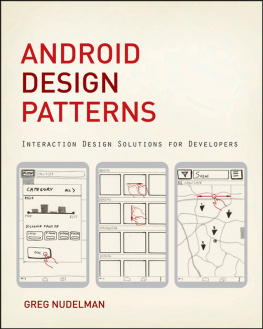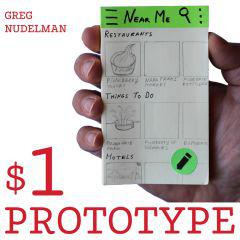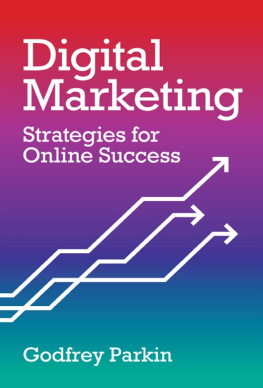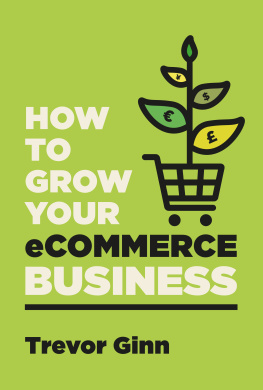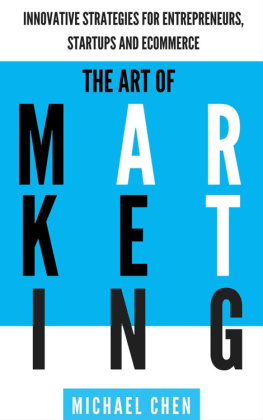Greg Nudelman - Designing Search: UX Strategies for ECommerce Success
Here you can read online Greg Nudelman - Designing Search: UX Strategies for ECommerce Success full text of the book (entire story) in english for free. Download pdf and epub, get meaning, cover and reviews about this ebook. year: 2011, publisher: John Wiley & Sons, genre: Home and family. Description of the work, (preface) as well as reviews are available. Best literature library LitArk.com created for fans of good reading and offers a wide selection of genres:
Romance novel
Science fiction
Adventure
Detective
Science
History
Home and family
Prose
Art
Politics
Computer
Non-fiction
Religion
Business
Children
Humor
Choose a favorite category and find really read worthwhile books. Enjoy immersion in the world of imagination, feel the emotions of the characters or learn something new for yourself, make an fascinating discovery.
- Book:Designing Search: UX Strategies for ECommerce Success
- Author:
- Publisher:John Wiley & Sons
- Genre:
- Year:2011
- Rating:4 / 5
- Favourites:Add to favourites
- Your mark:
- 80
- 1
- 2
- 3
- 4
- 5
Designing Search: UX Strategies for ECommerce Success: summary, description and annotation
We offer to read an annotation, description, summary or preface (depends on what the author of the book "Designing Search: UX Strategies for ECommerce Success" wrote himself). If you haven't found the necessary information about the book — write in the comments, we will try to find it.
Greg Nudelman: author's other books
Who wrote Designing Search: UX Strategies for ECommerce Success? Find out the surname, the name of the author of the book and a list of all author's works by series.
Designing Search: UX Strategies for ECommerce Success — read online for free the complete book (whole text) full work
Below is the text of the book, divided by pages. System saving the place of the last page read, allows you to conveniently read the book "Designing Search: UX Strategies for ECommerce Success" online for free, without having to search again every time where you left off. Put a bookmark, and you can go to the page where you finished reading at any time.
Font size:
Interval:
Bookmark:

Part I:
Optimizing eCommerce Search Results Pages
Search is a wicked problem of terrific consequence the defining element of user experience. It changes the way we find everything It shapes how we learn and what we believe. Peter Morville
Chapter 1 Starting from Zero: Winning Strategies for No Search Results Pages
Chapter 2 How Shoppers Search
Chapter 3 Choosing the Right Search Results Page Layout
Chapter 4 Balancing Pogosticking and Page Relevance
Chapter 5 Making $10,000 a Pixel: Optimizing Thumbnail Images in Search Results
Chapter 6 Best Practices for Ads in Search Results
Chapter 1
Starting from Zero: Winning Strategies for No Search Results Pages
- The No Search Results Page: Your Key to Competitive Search Advantage page 4
- Create a Robust Partial Match Strategy page 11
- Employ Multiple Content Strategies page 15
- Case Study: Hotmail No Search Results Page page 17
- How Can Your Site-Search Analytics Help You, by Louis Rosenfeld page 19
Search, more than any other activity, is a living, evolving process of discoverya conversation between a customer and the Web site. Unfortunately, this conversation is often fraught with miscommunication, and so it is critical for you to keep this conversation going even when the customer has initiated a search that yielded no results.
Unfortunately, the typical product team has no coherent strategy for cases when there are no search results, generally treating such occurrences as a user error. Most teams spend the bulk of their design phase working on the search results pages for a successful search. Then in the harried moments prior to launch, the engineers hurriedly slap something together for the no search results page. Such an approach is detrimental to the success of a customers search experience.
In my experience, the effort and ingenuity a product team invests in the no search results page is indicative of its overall dedication to customer success. Ignoring this special kind of search results page virtually guarantees a mediocre search experience and contributes to obscurity in the ecommerce marketplace. On the other hand, if a team thinks creatively about the case when there are no search results and focuses on customer needs, it can turn a temporary snag in communication into an opportunity for deeper connection and a source of tremendous competitive advantage.
The No Search Results Page: Your Key to Competitive Search Advantage
To see how original thinking about the no search results page can revolutionize an entire industry, consider the history of Google. Although a relative latecomer to an already saturated search market, Google blew away all competition through an unapologetic dedication to customer success. One critical innovation was the Google Did you mean feature, which gave the process of discovery a safety net and made exploration more fun. This feature was the result of deliberate and original thinking about how to help people correct the misspellings that were a common cause of the appearance of the no search results page. Controlled vocabulary substitution redefined the way Google does search, and today, the Did you mean feature shown in is a virtual necessity for a successful search implementation.
The Google Did you mean feature
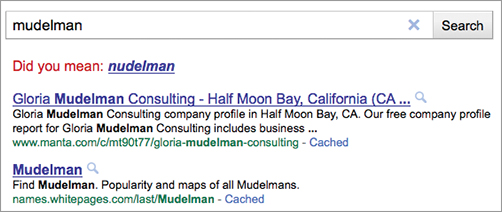
If you want to create a killer search app, begin with the no search results page. Starting from zero forces your team to address the most difficult design questions up front and honestly assess your engineering budget and capabilities. More important, your team can define the entire search user interface design problem more preciselyin a compelling and possibly even original way.
No Search Results Strategy: Not a Zero-Sum Game
No simple set of rules exist that guarantees a successful implementation of a no search results page. However, the following four broad design principles provide a useful starting point:
Dont be afraid to say I did not understand. Clearly indicate there are no search results, so your customer can recover.
Focus on providing a way out. Make sure every control on the search results page does something productive to help resolve the no search results condition.
Create a robust partial match strategy. Over-constraining is the most frequent mistake people make when searching ecommerce sites. Having a robust partial match strategy is critical.
Employ multiple content strategies. Draw from multiple sources to provide the most relevant content first to aid recovery from the no search results condition, while staying true to your customers original intent.
Now look at some examples of how you can combine these design principles creatively to develop both compelling customer experiences and opportunities for business success.
Dont Be Afraid to Say I Did Not Understand
Clear communication of system state forms the foundation of all human-computer interaction. In his Alertbox blog post Ten Usability Heuristics, Jacob Nielsen put Visibility of system status at #1. If customers cannot understand that a search system did not find what they asked for, they cant take the appropriate corrective action. Yet many search applications do not display the no search results condition clearly or accurately.
. Can you tell whether the system found what the customer searched for?
does not communicate zero search results effectively


On the Morningstar search results page, there is no explicit message that states No results found . The only zero on the page appears in the black bar in the form of 1-0 of 0 , which does not make much sense. Compare the Morningstar page with the Google page shown in .
Google clearly communicates a zero search results condition and often takes appropriate corrective action automatically
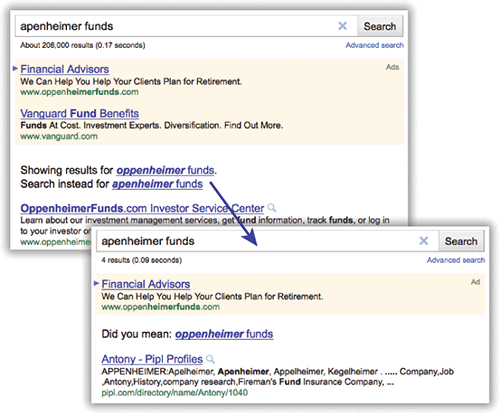

The status message on the Google search results page is clear and straightforward: Showing results for oppenheimer funds. Search instead for apenheimer funds , making it obvious that the system assumed a misspelling and made the most likely substitution automatically. In case the person actually did want to search for apenheimer , Google also makes the original query available. Clicking Search instead for apenheimer funds yields the result shown in in the lower right.
If you look carefully, you noticed that this Google system behavior is a little different than the Did you mean: implementation shown in . This system behavior demonstrates another key principle: The best design for your application is the one that works best for a particular query, your audience, and your business model. There are no hard-and-fast rules for implementing any of the strategies that handle no search results conditions. Even the industrys best sites work tirelessly to make continuous, small improvements. No search results pages are critical to your sites success, so it pays to keep a particularly close eye on any design changes to make sure that they are indeed providing a better experience for your customers. That is why it is important to continuously test and evaluate the performance of your no search results pages using A/B testing (see sidebar).
Font size:
Interval:
Bookmark:
Similar books «Designing Search: UX Strategies for ECommerce Success»
Look at similar books to Designing Search: UX Strategies for ECommerce Success. We have selected literature similar in name and meaning in the hope of providing readers with more options to find new, interesting, not yet read works.
Discussion, reviews of the book Designing Search: UX Strategies for ECommerce Success and just readers' own opinions. Leave your comments, write what you think about the work, its meaning or the main characters. Specify what exactly you liked and what you didn't like, and why you think so.


